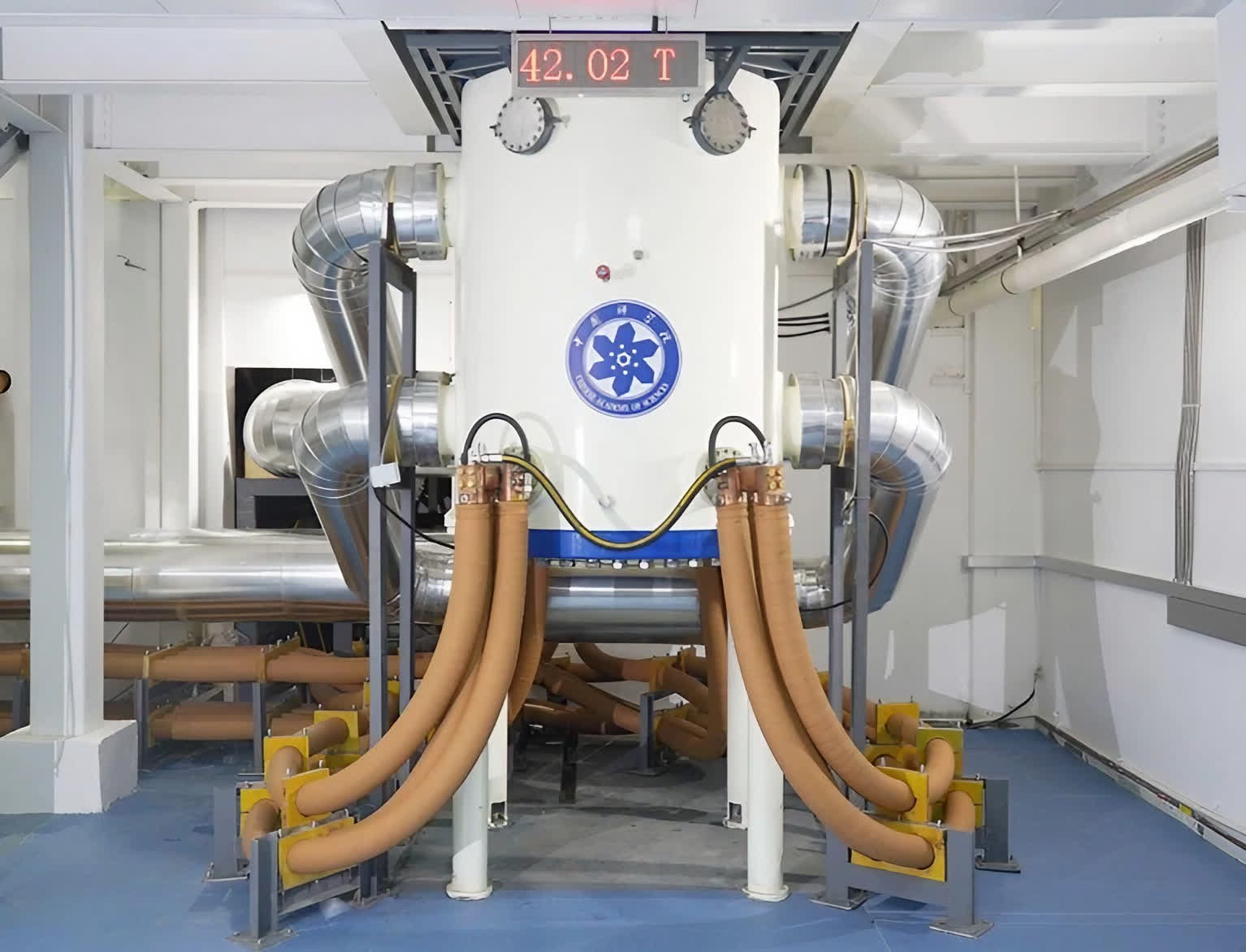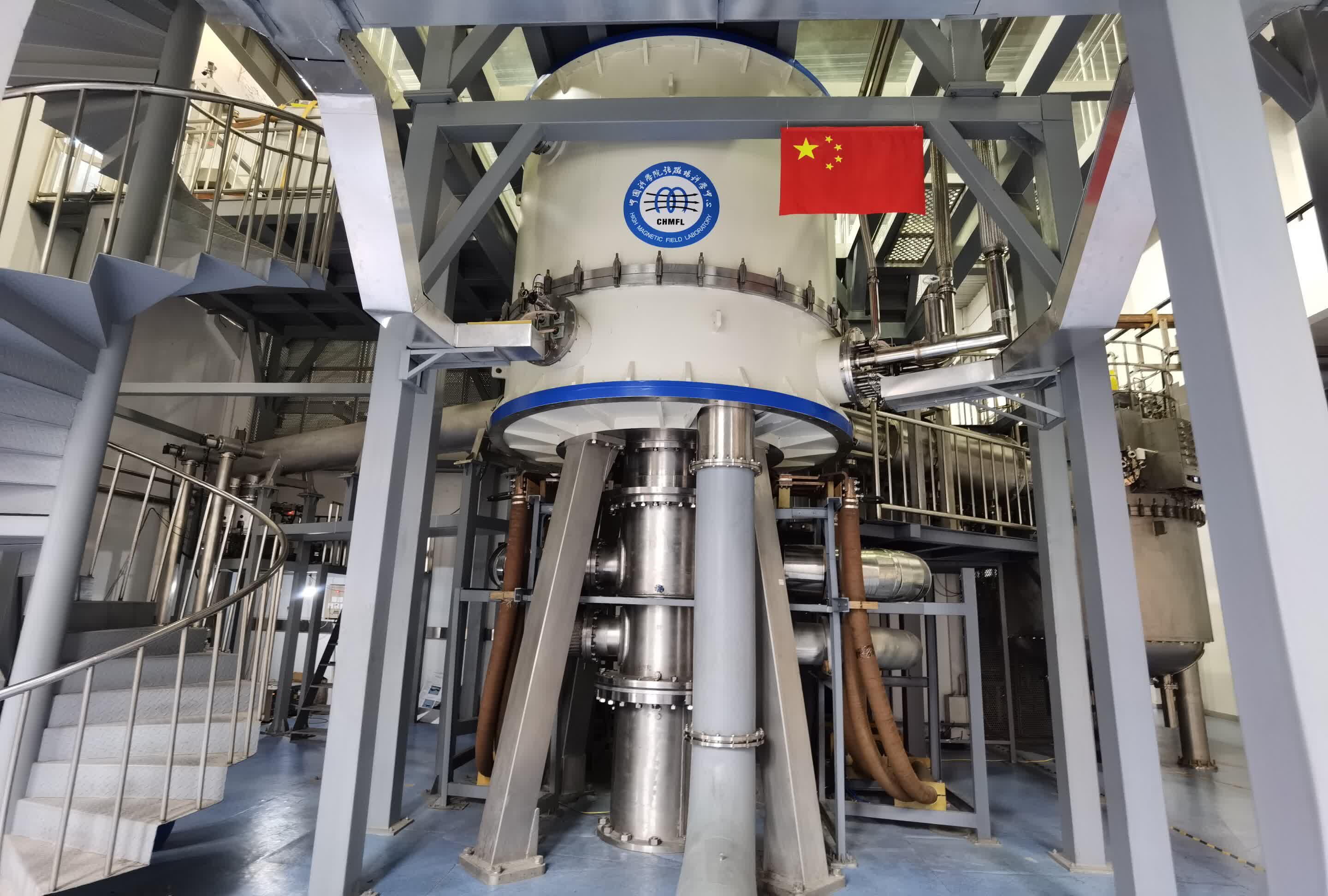In a nutshell: Scientists in China have created a mind-bogglingly powerful resistive magnet that has officially broken the world record by sustaining an incredible 42.02 tesla. That is over 800,000 times stronger than the magnetic field produced by Earth itself, which has a flux density of about 50 microtesla.
The new record was set on September 22 at the Steady High Magnetic Field Facility (SHMFF) in Hefei, narrowly edging out the previous record of 41.4 tesla held by another resistive magnet at the National High Magnetic Field Lab in Florida since 2017.
As for why scientists are so determined to push the limits of magnetism, physicist Joachim Wosnitza from Germany's Dresden lab explained that it opens up all kinds of bizarre new realms of physics to explore. Essentially, the stronger the magnetism, the greater the chances of discovering new states of matter.
Another physicist noted that high magnetism allows scientists to engineer and manipulate entirely new phases of matter that simply don't exist under normal conditions. Each additional tesla achieved also makes instruments exponentially more sensitive for detecting faint phenomena.

The SHMFF's new champion is available for international researchers to test on advanced materials like superconductors.
The only drawback of such resistive magnetic systems is that they are real power hogs. The SHMFF's creation consumed a staggering 32.3 megawatts to achieve that record. However, scientists continue to use them because they can sustain high magnetic fields much longer than their newer superconducting counterparts, which eventually reach their limits. The older magnets can also be ramped up quickly.
Nonetheless, the enormous power requirements are a significant problem. Therefore, teams like those at the SHMFF are also working on hybrid and fully superconducting designs that could achieve extreme strengths while consuming much less energy.
This is not to say that hybrid or superconducting designs are less powerful than resistive magnetic systems. In fact, China debuted a hybrid resistive/superconducting magnet in 2022 that achieved a 45.22 tesla field.
On the other side of the world, the US National Lab's mini superconducting prototype managed a brief 45.5 tesla burst back in 2019. However, making these new low-power systems reliable and affordable – while also keeping them cool – remains a major technical challenge, underscoring the continued need for resistive magnets.
